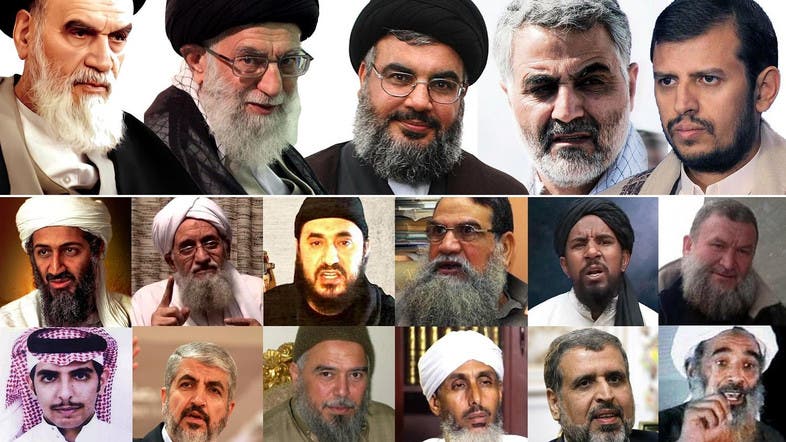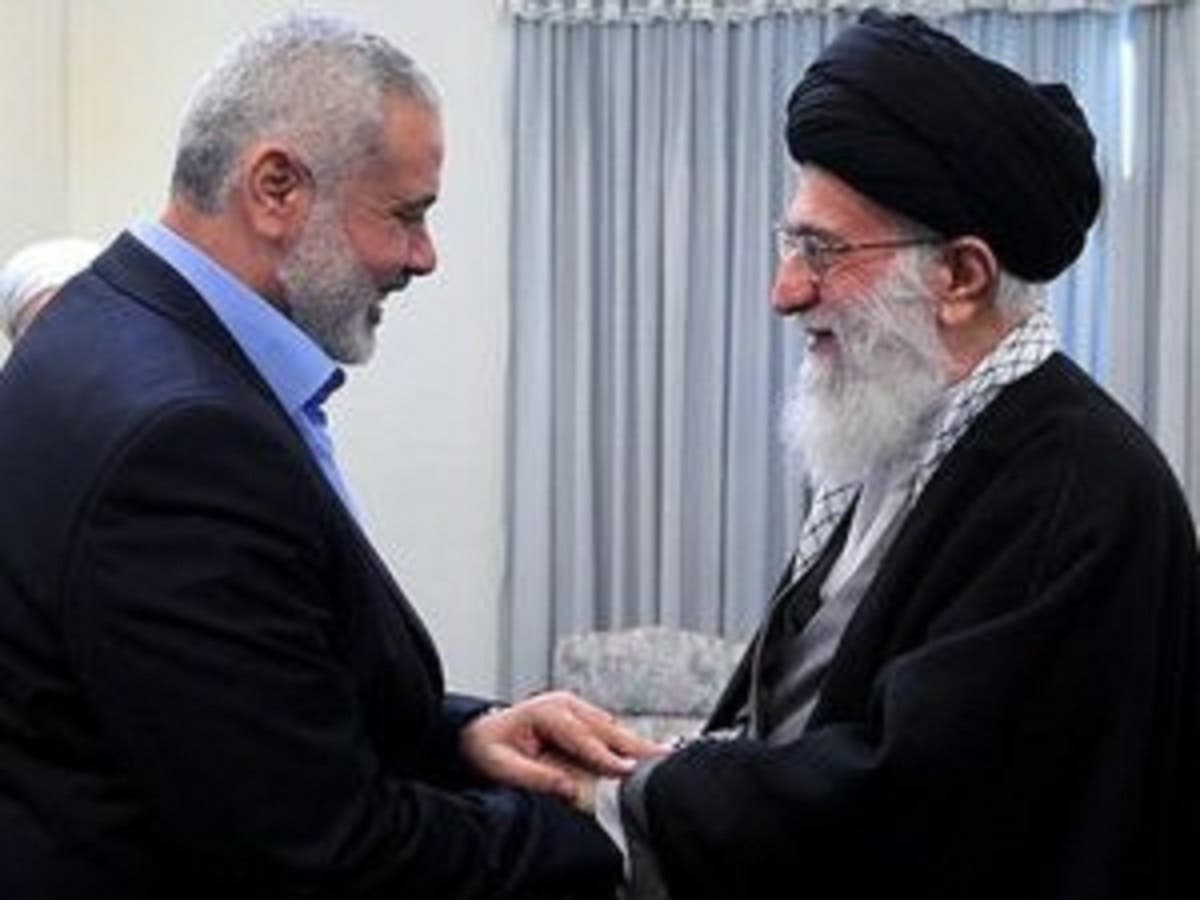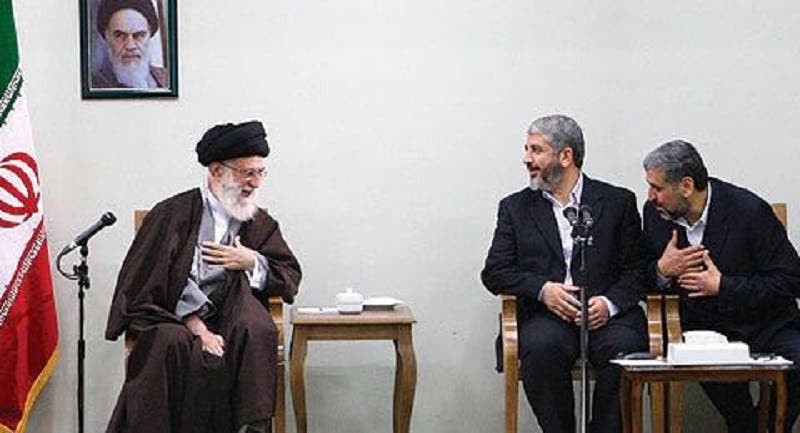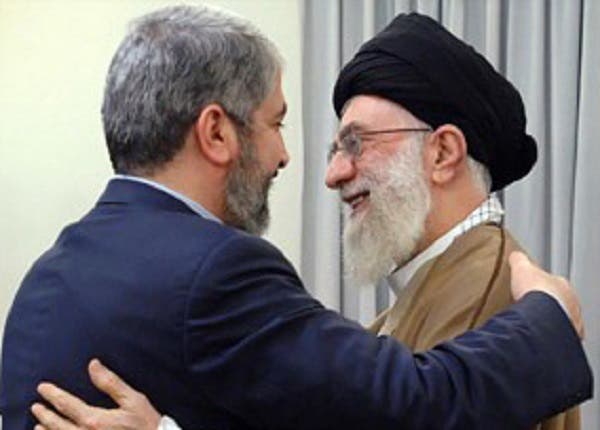Al-Arabia – New documents from Abbottabad, the Pakistani city where al-Qaeda leader Osama bin Laden was hiding out, uncovered details of deep ties between Iran’s Khomeini regime and several armed “Salafists” groups.

The US Central Intelligence Agency had seized documents in 2011 from Abbottabad that revealed ties between al-Qaeda and the Iranian Revolutionary Guard Corps.
The “Salafist” groups identified in the newly-exposed document include the Armed Islamic Group of Algeria, which began its operations in 1992, and the Libyan Islamic Fighting Group, which started its operations in 1982 and reformed again in 1989 before joining al-Qaeda in 2007.
Among the groups are the Egyptian radical Islamist group, the al-Takfir wa al-Hijra, Hamas, and the Palestinian Islamic Jihad.
Bilateral alliances
The Khomeini regime has been working with members of “Salafist” groups since the Islamic Jihad group assassinated Anwar Sadat in October 6 of 1981.
Sadat’s assassination and the success of the Iranian Revolution launched bilateral alliances between several political Islamist groups, with Lebanon’s Hezbollah and its Sunni counterparts supporting them.
Calling it an “Islamic Awakening” or “Islamic Revolution,” the allied groups devised a “pragmatic” political goal to overthrow the leaders of the Arab nations together.
Al-Qaeda’s ‘meager years’
There was no mention of who wrote the document, which Al Arabiya reviewed, but a highly-ranked al-Qaeda member is said to be responsible for the file.
The unidentified leader said the document was meant to clarify al-Qaeda’s relationship with Tehran following an influx of information in the media that had left their supporters confused. It also outlined how al-Qaeda leaders first developed their political strategy and when the Khomeini regime began working with other extremist Salafist “jihadi” groups.
At the time of al-Qaeda’s formation and its early years, which the document described as the “meagre years,” the Armed Islamic Group of Algeria faced strong opposition, followed by the Libyan Islamic Fighting Group in 1995-1997.
The writer added, “Islamic jihadists grew more frustrated as more political groups faced opposition over the years. One of those instances was when the Sudanese government expelled members of the Muslim brotherhood, among them Sheikh Osama and his party, the Libyan Islamic Fighting Group, and several others.”

According to the document, “Several groups traveled to other countries to find shelter for their leaders and members. The Egyptian Muslim Brotherhood intended to settle in Iran, where they could live freely and safely.”
Taking advantage of their ongoing strife with Egypt, Iran agreed to shelter the Brotherhood. But Iran’s support of the Brotherhood soon drove other Salafi extremist groups, like the Libyan Islamic Fighting Group, to try to form alliances with the country.
According to the document, “Abu Abdullah al-Sadiq” or Saif al-Islam Qaddafi, leader of the Libyan Fighter Group and son of Libyan leader Muammar Gaddafi, pushed to form an agreement with Iran.
However, the document continued, that the Sharia Council, headed by Sheikh Abu Mundhir and Sheikh Abu Yahya, two of the most high-ranking jihadi officials with strong ties to al-Qaeda, and others insisted that the state of the group was not critical enough for them to join forces with Iran.
But the Sharia Council’s refusal to form ties with Iran did not stop the Libyan Islamic Fighting Group leaders from sending several members to Tehran, where they joined forces with other jihadists from Algeria, Tunisia, Egypt and Libya.
Al-Qaeda’s deep ties with Iran
With the withdrawal of Taliban leader Mohammed Omar, “Mullah Omar,” the seizing of Kandahar, and the American strikes that followed 9/11, al-Qaeda was forced to withdraw into the Afghan cities of Khost and Gardez.
The document also revealed that Hezbollah sent a representative to al-Qaeda leaders with advice to contact him and offered the group shelter.
The writer added, that “Abu Musab al-Suri,” a Syrian al-Qaeda member, also suggested he contact some of the old dignitaries that he knew from Saddam Hussein’s regime. The problem, the writer continued, was the ever-growing number of members that needed to be protected.
The first stage in Tehran
The al-Qaeda leader continued to detail how several groups began relocating to Iran after the fall of the “Islamic Emirate” in Afghanistan. “Most of the Jihadists went to Pakistan or settled in Tehran. I was one of the people who went to Waziristan and then to Karachi, where we stayed for about three months,” he wrote.
He added: “We received orders from the Brotherhood to go to Tehran, and leaders from all the other groups, whether it was al-Qaeda or the Libyan Islamic Fighting Group, passed on the same orders. So a large number of members began traveling to Tehran, some of them received visas to enter the country while some went in without visas at all.”

According to the file, the leaders assigned Abu Hafs al-Mauritani, a former al-Qaeda leader, to “manage the crisis.”
Members, which included junior officials from al-Qaeda were among the first to be stationed in Iran. They were also joined by other leaders from the Egyptian Brotherhood, Egyptian jihadists, and other jihadi groups from the Levant, like Zarqawi’s group.
According to the document, Abu Hafs was put in charge of forming a deal with Iran to allow the “brothers” to come to the country for refuge. While the influx of Salafist jihadists was welcomed with open arms, they were asked to abide by a certain number of rules.
According to the document, the pre-arranged deal meant “the Brotherhood could not use mobile phones nor make any phone calls, because the American security services were tracking the calls. While they could rent houses, they were ordered to refrain from suspicious activities.”
In Iran, al-Qaeda members and other Salafists were considered “heroes” who were going to take down America, wrote the operative. According to the document, they were respected and celebrated.
The second stage in Tehran
When operatives failed to keep up their end of the bargain, Iran set up residential complexes to prevent any information from leaking to the American authorities.
According to the document, Abu Hafs could not manage all the members, who “behaved erratically, bought mobile phones and cars, they went around Tehran whenever they pleased, and they even spoke to members in Chechnya on the phone,” the operative wrote.
As a result, Abu Hafs and Iran agreed that members from the Gulf, Syria, and other countries, were to be sent back to their countries. However, the document explains, when many members did not follow the rules of their agreement, and Iran soon turned on the very people who they promised to protect.

Iranian forces began raids to capture al-Qaeda members, many of whom the file described as “ordinary members of al-Qaeda” as well as a few prominent members. Those who managed to escape went to the Iranian city of Zahedan.
Members of extremist groups were separated throughout Iran, and began renting out homes all over the country with the help of “trusted Sunni brothers” who rushed to their aid. According to the document, Iranian authorities helped members who had visas, and those who did not were shown where they could acquire the necessary papers.
Utmost respect
According to the uncovered document, officials from the Islamic Revolutionary Guard Corps treated captured members with the “utmost respect,” and even offered apologies to the detainees. The guards disclosed that they were under “a lot of pressure” and were ordered to capture the brothers for their own protection.
The al-Qaeda leader revealed that detainees were “investigated” and only asked to divulge their names, age, and general information about themselves. The prisoners were “offered food, treated well, and some members were even put on house arrest in hotel rooms.”
Ties between Iran and the Salafist jihadi groups have not come to an end, and extremists set up ground in multiple Arab and Islamic countries.
Part two of this article will outline Abu Musab al-Zarqawi’s leadership in Iraq, al-Qaeda operations in Saudi Arabia, and details of Tehran’s additions to “Sunni” militant groups.
 Shabtabnews In this dark night, I have lost my way – Arise from a corner, oh you the star of guidance.
Shabtabnews In this dark night, I have lost my way – Arise from a corner, oh you the star of guidance.


